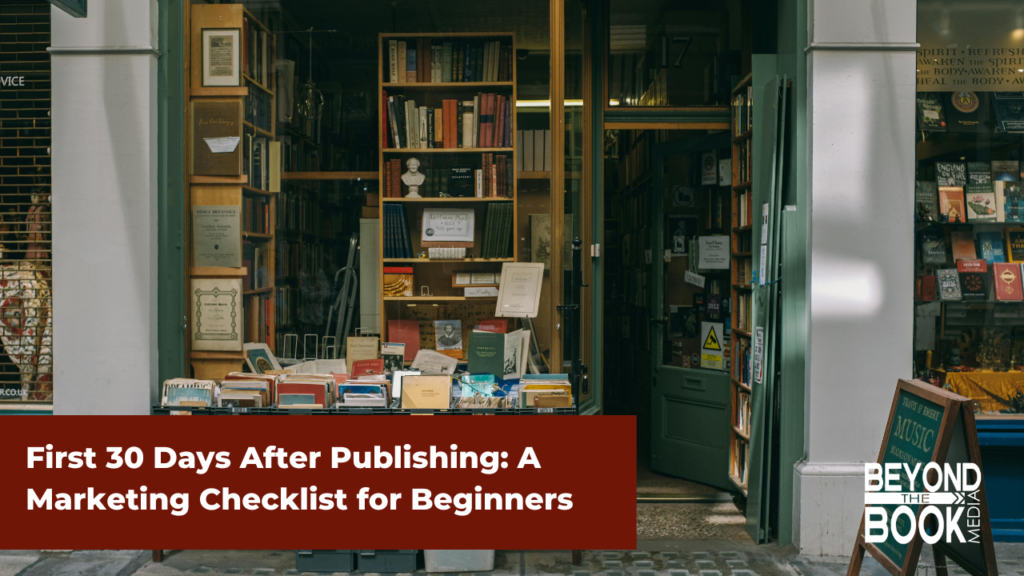Congratulations! You did it—your book is finally published! But now what? How do you get people to notice it?
The first 30 days after your book launch are crucial. This is your chance to build momentum, reach new readers, collect reviews, and set your book up for long-term success. If your book is on Amazon, it is also a great time to take it to the best sellers within its category.
The thing is that for our first self-published book, we aren’t always sure about where to start. So, here’s a simple, step-by-step checklist to help you make the most of your first month as a published author.

Simple Marketing Checklist For Your First Month After Publishing Your Book
There are also a few things that you can do even before the launch to start getting people excited and involved in the book creation process, so that when launch day comes, you already have a few people dying to buy your book. But we will cover that in a separate blog post that we will link here when it is up next week. So stay tuned.
Week 1: Announce & Celebrate
- Share the news on social media – You can have a few promotional graphics created ahead of time and even start publishing a few days before the launch date through a countdown style. Don’t forget to include a purchase link.
- Email your list – If you already have a brand or if you follow our list of marketing steps to take before launch, you will already have an email list of people interested in you and your book. Let your subscribers know your book is out, invite them to buy, read, and review, and thank them for their support. You could even run a promotion/giveaway for those who can prove that they purchased and reviewed your book.
- Tell your inner circle – Ask close friends and family to share the news, leave reviews, and help spread the word. It is impressive how much this can help.
Week 2: Build Buzz
- Offer a launch promo – Consider a limited-time discount or free bonus (like a downloadable guide or signed copy).
- Schedule interviews or guest posts – You can achieve this by reaching out to your favorite podcasters or bloggers and sending them information about you, your business, and your book. Start pitching before the book is out, so you have some time to schedule.
- Create 3–5 social media posts – Use quotes, behind-the-scenes details, or short excerpts to keep readers engaged. Tell stories about how you got inspired to write this, how the writing process went, etc. The idea is to make it relatable and to get people to want to learn more.
Week 3: Focus on Reviews
- Follow up with readers – Keep track of buyers, thank them for purchasing your book, and gently remind early buyers to leave a review on Amazon, Goodreads, or your site. Reviews help with the longevity of your book; these are how people will decide whether it is worth it for them to buy your book months and years in the future.
- Share positive reviews – Highlight nice comments or feedback to build credibility. You do this through your social media.
- Ask for endorsements – Reach out to other authors, professionals, or influencers for a blurb or shout-out. In some cases, you might have to provide a free copy if they agree to do it, but it is an expense worth investing in.
Week 4: Keep the Momentum Going
- Start a new social media promo campaign – Try a giveaway, host a live Q&A, or run a contest.
- Pitch your local media – Now you should have some reviews and sales on your book, making it easy to pitch local newspapers, radio shows, and libraries, and get accepted for interviews or talks. These platforms often love to feature community authors.
- Reflect and plan ahead – What worked well? What would you change? Start thinking about long-term marketing or your next project. Maybe create a workbook around your book, make an audiobook for it, create a course curriculum around it? The possibilities to keep the hype and sales up are endless.
Final Tip: Publishing your book is just the beginning. Keep showing up for your readers, one small step at a time.




